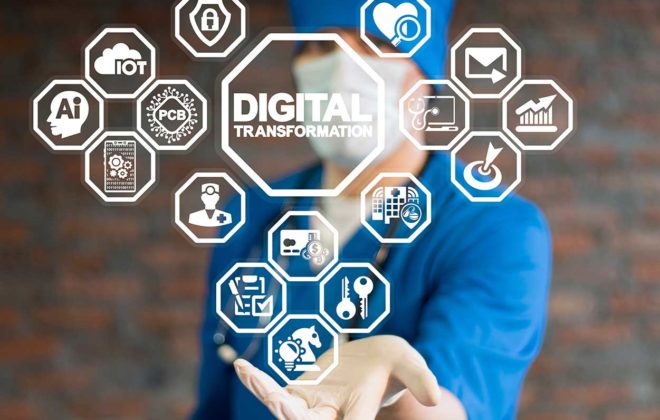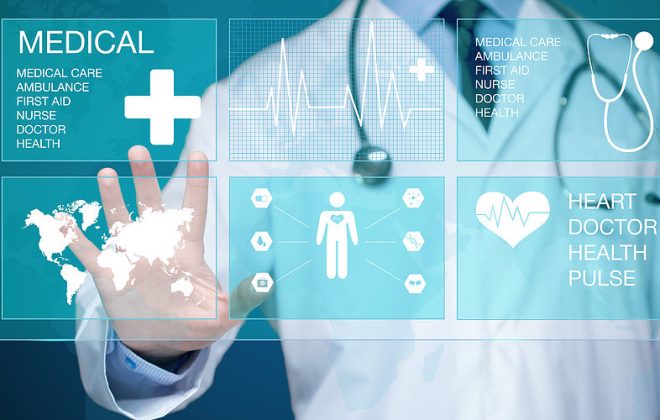The Role of Technology in Improving Patient Doctor Relationship
Technology is phenomenally transforming the way we live our lives, consume information, or even do business. Like all other industries, the healthcare industry is also realizing the benefits of using technology to connect with its customers – that is the patients. Healthcare organizations realize that effective patient engagement is key to lowering costs and improving patient outcomes. Electronic health records, patient portals for information exchange, mobile apps to wearable medical devices have proved to be immensely useful tools in boosting engagement between caregivers and patients today.
Besides, telemedicine and remote patient monitoring have been made possible with the advancement of technology to provide quality care, easy access, and improved communication between healthcare providers and their patients.
How technology plays a pivotal role in healthcare?
According to statistics shared by Google and Pew Research Center, there are 4.7 billion searches that are conducted on Google every day and 1 in 20 of the searches are related to health-related information. They have also found out that 80% of the online users look for health associated information online with 66% searching for information online about specific diseases. Around 44% search for online information about doctors and healthcare professionals.
Patient engagement technologies tend to actively involve the patients in all the vital aspects of healthcare right from online portals, wearable devices to apps and social media strategies. Today, consumers’ expectations and behavior have changed and they prefer to have all the health-related information at their fingertips. The advent of Internet has enabled them to stay connected and engaged with healthcare providers to seek quality care with medical assistance as and when required.
Role of Technology in Healthcare
Patient engagement with their physicians can be helpful in boosting communication among them and provide higher customer satisfaction. The use of technology can help in eliminating paperwork and provide patients with more accurate information about their health and give them a better experience.
Some of the vital benefits of technology in the overall healthcare ecosystem:
Appointment Scheduling at a Short Notice
With the availability of patient portals and apps, it’s easier for patients to make appointments with their healthcare providers easily than ever before. Online appointments can be made quickly and any changes about availability or cancellations may be done without any hassles. Patients can also get reminders about their upcoming appointments and notifications for refilling their prescriptions using text, voice messaging or emails.
E-Consultation
It’s possible to curb re-admission rates using e-consultation services as it allows physicians to stay in touch with their patients and assess their health conditions. Communication between patients and physicians becomes easier, saves time, and improves efficiency in the process. It also helps to avoid longer wait times as well and avoid the inconvenience of traveling for older patients.
Positive Workplace
It’s always important to have a feel-good factor for the patients to establish trust and connection with their healthcare providers. A vibrant and positive workplace aided with technology can help the caregivers in delivering better quality care for their patients and results in greater mental satisfaction for them.
Reduced Cost with Increased Patient Satisfaction
Patients may be engaged by leveraging technology to improve the process and quality of care given to them by healthcare providers. This can result in more satisfaction among patients through the best medical services. Technologies such as EHR help in boosting the workflow through shared information among patients and the medical practitioners. The information can be used for reducing errors and easing the payment process. It also makes scheduling of tasks more easy and efficient.
Role of Technology in Improving Doctor-Patient Collaboration
Management of chronic diseases
One of the biggest challenges faced by primary healthcare providers is to implement the best care practices for patients suffering from chronic diseases. However, digital healthcare technology has introduced many devices which can be useful in early detection and prevention of specific kinds of diseases. Wireless remote monitoring can recognize some of the most vital signs and symptoms among patients and assist in early intervention along with enabling patients to be actively involved in the process of monitoring.
Some of the clinical trials have indicated that remote monitoring can help in reducing cases of hospitalizations, specifically among patients with cardiovascular implanted devices such as pacemakers.
Early detection of health issues before they escalate
Patient safety can be improved with quick detection and intervention in the early stages before the situation turns critical. Most of the clinical decision support is based on the patient data which corroborates with preventative and predictive care. The subtle signs of deterioration may be usually observed 6-8 hours before the adverse event occurs and sometimes they may be missed during random checks. With the improvement in technology, this can be handled more efficiently as measurement of vital signs of patients can be integrated with additional patient data through the use of smart algorithms. Such patient data can be extremely useful in early detection of illnesses, which can help the healthcare providers to intervene in the process and deliver quick and prompt treatment to the patients.
Critical care management and post-operative care
Mobile phone monitoring and apps used in post-operative care can assist in speeding up the process of patient discharge and assist in early detection of any complications in them. This also provides benefit to the surgeons in monitoring patients remotely that can save their considerable amount of time which would be otherwise spent on face-to-face visits. There are modern ambulatory surgical units which are equipped to handle surgical procedures which are complex.
Growth of telemedicine for instant patient access
Telemedicine assists those patients who need to make appointments with specialists at a quick notice. This technology offers tremendous flexibility to patients as they can consult their physicians over the phone to seek advice on different medical conditions. It has made patient care accessible and convenient. Telemedicine helps in boosting engagement with the patients and also provides them with greater convenience to seek medical assistance as and when required. By engaging with the patients through telemedicine, caregivers can help them maintain appointments and care schedules. Patients can easily ask questions, report warning signs and make appointments with their doctors without having to make a visit to the hospital.
Conclusion
Consumers are more informed and aware today and look for better, high-quality care that can provide them with a more satisfying healthcare experience. In this value-based environment, healthcare providers need to integrate the right healthcare strategies with technology to cultivate meaningful relationships with their patients by assisting them at various stages of their healthcare journey.




